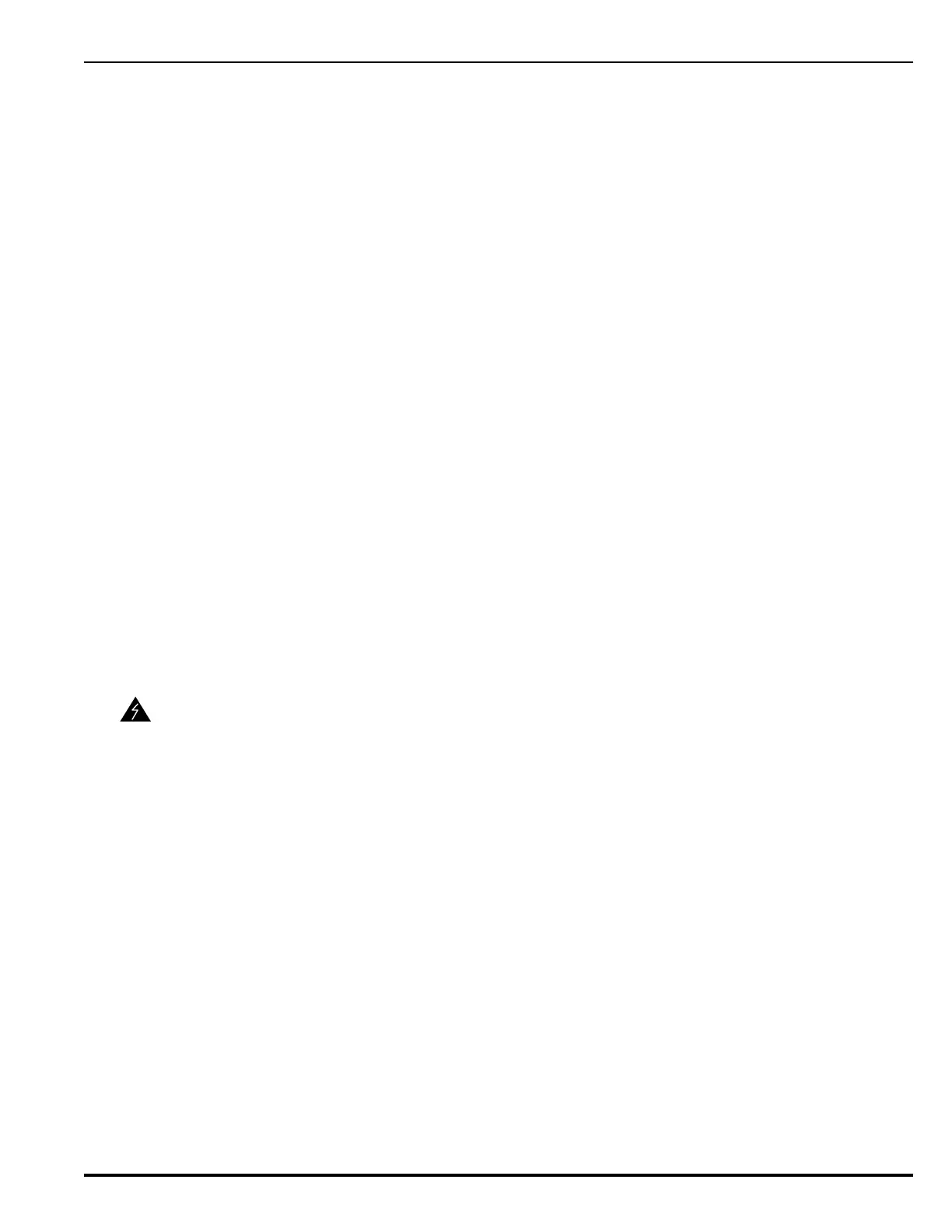Maintenance
06-237619-001 6-5 April 2020
6-5.1.4 Personnel
Check that all personnel who may have to operate the system are properly trained and
authorized to do so. All new employees must be instructed in its use.
6-5.2 Inspect Hazard Access
Ensure access to hazard areas, manual pull stations, discharge nozzles, and cylinders are
unobstructed and nothing obstructs the operation of the equipment or distribution of agent.
6-5.3 Inspect Hoses
Inspect actuation and discharge hoses for loose fittings, damaged threads, cracks, distortion,
cuts, dirt, and frayed wire braid. Tighten loose fittings and replace hoses with stripped threads
or other damage. If necessary, clean parts as directed in Paragraph 6-11.1. Inspect the
adapters, couplings and tees at the Kidde IGS cylinder pilot outlets for tightness. Tighten
couplings if necessary. Replace any damaged parts. If applicable, check any pilot line actuation
or discharge hoses in a similar manner.
6-5.4 Inspect Release Units and Slave Gauge Assemblies
Inspect the Kidde IGS System cylinder release units and slave gauge assemblies for physical
damage, deterioration, corrosion, distortion, cracks, dirt and loose couplings. Tighten loose
couplings. Replace if damaged. Check the release unit’s or slave gauge assembly’s electrical
line for wear and damage, and if necessary replace. If necessary, clean as directed in
Paragraph 6-11.1.
Check the pressure on the gauges. If the gauge pressure is not normal (300 bar gauge at
15°C (4351 psig at 59°F) or 200 bar gauge at 15°C (2901 psig at 59°F) depending on the
pressure specified on the label), remove and recharge the cylinder as instructed in
Paragraph 6-12.
Note: The supervisory pressure switch on the gauge is designed to change the contact state
when the pressure falls below 160 bar (2320 psi) for 200 bar (2900 psi) cylinders and
240 bar (3480 psi) for 300 bar (4350 psi) cylinders.
6-5.5 Inspect Cylinder and Valve Assembly
Inspect the Kidde IGS cylinder and valve assembly for leakage and physical damage such as
cracks, dents, distortion and worn parts. Check the burst disc for damage. If the burst disc is
damaged or needs to be replaced, return the cylinder. If damaged parts are found on the Kidde
IGS cylinder/valve assembly, replace the entire assembly. If necessary, clean the cylinder and
associated parts as directed in Paragraph 6-11.1.
6-5.6 Inspect Electric Control Heads on Nitrogen Pilot Cylinders
If applicable, inspect the Kidde IGS nitrogen pilot cylinder electric control heads for damage,
corrosion, and dirt. Check the control heads' flexible electrical line for wear and damage. Check
the control head for loose coupling and tighten if necessary. Check that the indicator is in the
SET position, the pull pin is installed in the manual lever, and the seal wire is intact. Replace
the control head if damaged. If necessary, clean as directed in Paragraph 6-11.1.
6-5.6.1 Inspect Brackets, Straps, Cradles and Mounting Hardware
Inspect the Kidde IGS cylinder brackets, straps, cradles, and mounting hardware for loose,
damaged, or broken parts. Check the cylinder brackets, straps, and associated parts for
corrosion, oil, grease, and grime. Tighten any loose hardware. Replace damaged parts. If
necessary, clean as directed in Paragraph 6-11.1.
WARNING
Before removing the release unit, all pressure must be relieved from the
actuation lines. Pressure can be relieved from unvented actuation tubing by
loosening the fitting on the release unit slightly and allowing the line to bleed
out completely. Failure to perform this action can result in damage to the
release unit.

